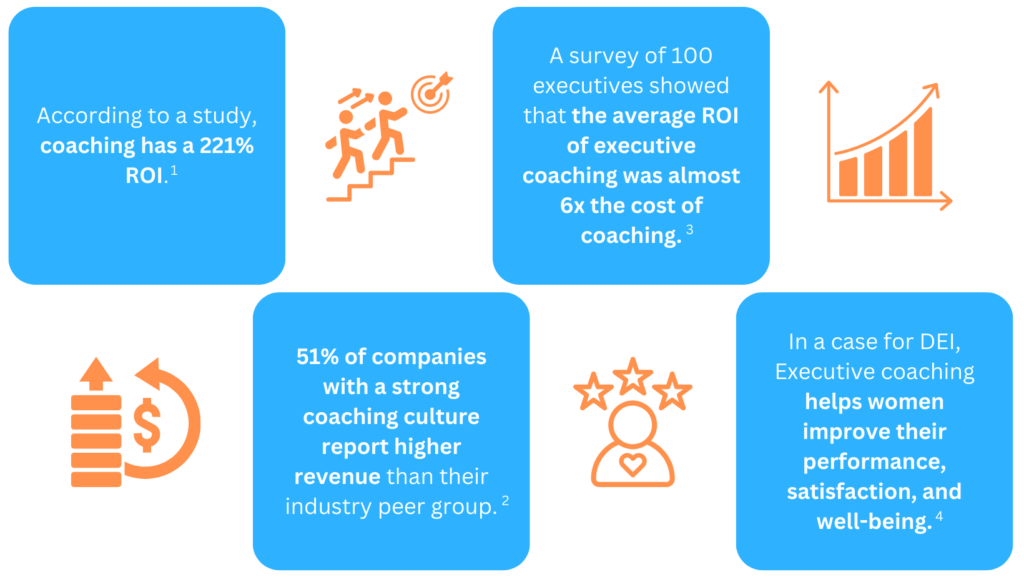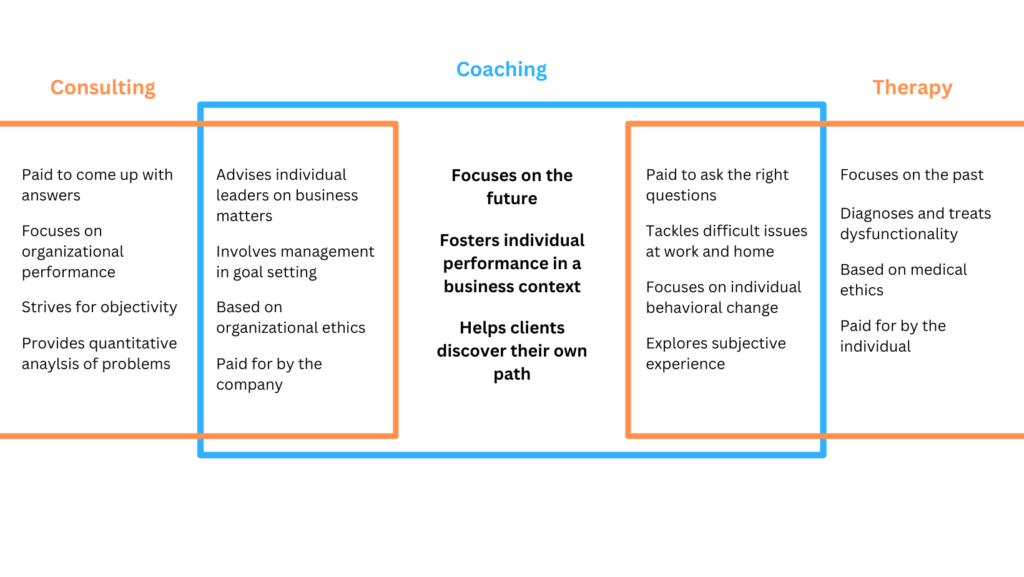
Today’s workplaces face many challenges attracting and retaining talent.

Younger professionals seek environments where they can be constantly learning and growing1.
Established older professionals seek to achieve and excel in senior positions as proof of their abilities to withstand the pressure for fast change while maintaining balance on execution of operations.

Attracting, retaining, and giving the best environment for your talent to flourish has never been more competitive. In the current landscape, employees are navigating unprecedented career shifts, transitioning between roles and industries, opting for early retirement, or venturing into entrepreneurship.
The undeniable reality is that individuals are more prone to explore new opportunities elsewhere if their professional development needs are not met.
The reality: Top talent is either growing or leaving.
Organizations are racing to understand how best to motivate, develop, and keep their best people.
This is precisely where coaching becomes a transformative force, contributing not only to employee retention but also to the overall prosperity of companies by fostering a culture of growth and innovation.
You might be thinking: How so?
Let’s explore what coaching can do for your organization.
Why Coaching?
McKinsey’s latest State of Organizations Report2 found that 39% of respondents in a survey conducted in 7 countries say they’re planning to leave their jobs in the next 3-6 months. So your top talent is very likely looking outside of the organization to fulfill their potential.
In an era where retaining employees hinges significantly on the availability of career advancement, skill development, and growth opportunities we somehow see that most organizations have not yet achieved the degree of integration and capability they see.
They are at risk of not executing their strategies properly and scrambling for talent, in a vicious cycle.
Remaining in the status quo is not an option.
On a happier note, check out some of the data and insights about the growth companies experience:

International Society for Performance Improvement3 Human Capital Institute4 International Coach Federation5 International Journal of Evidence Based Coaching and Mentoring6
Coaching can positively impact careers and lives by helping individuals to:
- Establish and take action towards achieving goals.
- Become more self-reliant.
- Gain more job and life satisfaction.
- Contribute more effectively to the team and the organization.
- Take greater responsibility and accountability for actions and commitments.
- Work more easily and productively with others (vertically and horizontally).
- Communicate more effectively .
Benefits of What Coaching Can Do for Your Organization
Fulfilled employees is just good business.
There are many uses for a coach when you consider your talent strategy for the years ahead. Let’s look at some of the concrete and sometimes unique benefits coaching can bring to your workforce.
Enhancing Communication and Fostering Collaborative Behaviors
Coaching is instrumental in elevating communication dynamics within teams and across departments, fostering improved collaboration and task comprehension.
By offering personalized strategies and feedback, coaching empowers individuals to refine their communication skills, enhancing communication among team members and departments, minimizing misunderstandings, promoting teamwork, and augmenting overall organizational effectiveness.
Nurturing intrapreneurs within an organization
Recognize that not everyone aspires to own a company, yet harbors a deep desire to make a significant impact, exercise autonomy, and unleash creativity. By providing tailored guidance and fostering a supportive environment, coaching empowers individuals to channel their entrepreneurial spirit towards driving innovation, contributing to a dynamic workplace culture where employees thrive in making a meaningful difference.
Job fulfillment regardless of role
Great professional coaching supports employee learning and growth, which increases their self-confidence and happiness, boosting job satisfaction and morale.
It also empowers individuals to seize control of their career trajectories instilling a sense of excitement and proactive engagement. Recognizing that professional fulfillment extends beyond mere job functions, coaching encourages individuals to set and pursue ambitious goals, equipping them with the tools to navigate challenges and capitalize on opportunities. This proactive approach not only elevates performance but positions individuals strategically for targeted promotions.
Which in turn leads to:
Increased productivity
According to The International Coach Federation (ICF) 7, Leaders who participated in coaching saw a 50% to 70% increase in work performance, time management, and team effectiveness.
By providing individuals with targeted guidance and support, coaching helps streamline workflows, identify and leverage strengths, and navigate challenges effectively. Through personalized strategies and constructive feedback, individuals can optimize their performance, set and achieve ambitious goals, and ultimately contribute to a more efficient and productive work environment. The iterative process of coaching not only refines skills but also instills a sense of accountability and motivation, fostering a culture of continuous improvement that directly translates into increased productivity across teams and departments.
Better leadership at all levels
By exploring and refining their leadership capabilities, transcending conventional roles, individuals gain invaluable insights into their strengths, weaknesses, and untapped potentials as leaders. This process enables them to experiment with and discover new leadership styles tailored to their unique personalities and professional contexts.
Better solutions and overall results
It assists leaders in crafting and implementing more effective business strategies, envision and communicate clearer goals. Through a strategic coaching partnership, leaders gain a comprehensive understanding of their organizational context, industry dynamics, and personal leadership style. Coaches challenge conventional thinking and facilitate a structured process for leaders to refine their strategic thinking.
Also, individuals at all levels of the hierarchy show up in more creative and authentic ways, increasing the quantity and quality of the pool of solutions at any given moment.
Gaining cost-effectiveness
Coaching emerges as a strategic asset in cost reduction for organizations by addressing two critical aspects:
Firstly, by minimizing turnover-related expenses. As it enhances employee satisfaction and engagement, coaching helps decrease turnover rates. This not only directly reduces operational costs associated with recruitment, onboarding, and potential severance, but also preserves the institutional knowledge and expertise of existing staff, preventing the speed and efficiency losses that accompany employee turnover.
Secondly, coaching transforms employees into motivated and upskilled contributors who actively identify opportunities for process improvement and waste elimination. Empowered by coaching, employees become adept at recognizing inefficiencies, streamlining workflows, and proposing innovative solutions. This proactive approach not only enhances operational efficiency but also contributes to long-term cost reduction by optimizing resource utilization and minimizing unnecessary expenses. In essence, coaching serves as a catalyst for creating a workforce that not only excels in their roles but also actively contributes to the organization’s bottom line through continuous improvement initiatives.
Now you might be wondering what exactly is coaching and how can it help you achieve all that?
What is Coaching?
The definition of the ICF, the gold standard of professional coaching8, is that
Coaching is partnering with clients in a thought-provoking and creative process that inspires them to maximize their personal and professional potential.
Simply put, it is a client driven, highly focused on goals, the reason for the goals, the behaviors needed to enable it, and an accountability structure so that they can be achieved.
When compared to teaching or even mentoring, coaching significantly raises the autonomy and higher order thinking individuals, as coaching doesn’t involve tutoring or knowledge transfer in a traditional sense, and uses what already works for the client as leverage for building a better future.
And while training and mentoring shouldn’t be abandoned, have you ever seen such an ROI of morale with any other type of learning and development?
99% of individuals and companies who hire a coach are “satisfied or very satisfied” and 96% say they would repeat the process. (ICF Global Coaching Client Study)
What Does Coaching Look Like?
Coaching is also not consulting nor therapy. Here’s a resource that explains how it can be perceived as such, since there is just a bit of overlap between these concepts.

Source HBR: https://hbr.org/2009/01/what-can-coaches-do-for-you
Coaching is a dynamic process that can unveil transformative insights, whether in a single session or as an ongoing relationship with a defined goal.
While the impact of even a brief coaching session is remarkable, the true magic unfolds in the context of a sustained coaching relationship. It goes beyond individual development, recognizing that the most profound changes occur when coaching becomes a collaborative journey over time.
The best coaching doesn’t exist in isolation; it integrates the client with the broader system surrounding them.
A systemic approach to coaching involves not only the individual client but extends to their team, other departments, and managerial relationships.
By weaving coaching into the fabric of the organizational system, we unlock the potential for holistic growth, fostering a collaborative and supportive environment that transcends individual success to elevate the entire organizational landscape in a ripple effect.
Why Work with External Coaches?
While some companies decide to form an internal pool of coaches, partnering with an external provider brings many advantages.
Objective perspective and unbiased feedback
External professional coaches bring a fresh, unbiased perspective to the coaching relationship. Unlike internal coaches who may be influenced by organizational dynamics or pre-existing relationships, external coaches offer impartial insights. This objectivity is crucial for individuals seeking an honest assessment of their strengths, weaknesses, and developmental areas. External coaches can provide a neutral space for open dialogue, free from internal organizational pressures and politics, allowing clients to explore challenges and opportunities with a greater sense of candor and trust.
Broader industry expertise and diverse skill sets
External coaches often possess diverse industry backgrounds and a wealth of experience, working with various organizations. This breadth of knowledge allows them to bring a wide range of strategies, best practices, and innovative solutions to the coaching process. While internal coaches may be well-versed in the specific context of the organization, external coaches can draw on a more extensive repertoire of skills and insights garnered from working across different sectors. This diverse expertise enriches the coaching experience, offering clients a broader perspective on leadership, management, and organizational dynamics.
Confidentiality and discretion
External coaches provide an additional layer of confidentiality and discretion. Employees may be more inclined to share sensitive information or discuss personal challenges with an external coach, knowing that the coach’s primary allegiance is to their professional growth rather than internal organizational dynamics. This confidentiality fosters a safe space for individuals to address issues they might hesitate to share internally, enabling a more open and candid exploration of personal and professional development goals. External coaches prioritize the client’s confidentiality, creating an environment conducive to meaningful self-reflection and growth.
Get Coaching with All Things Agile
Now that you know what coaching can do for your organization, you know that neglecting the importance of business coaching puts companies at risk of losing their most valuable assets—top talent—and lagging behind industry competitors.
At All Things Agile, we pride ourselves on being a boutique of coaching, not a factory of generic solutions. We carefully curate our partnerships, selecting clients with whom we forge close relationships and deliver highly customized solutions.
In a world often dominated by inflexible “everything is a product”, we recognize that coaching demands a different approach – one grounded in adaptability and tailored expertise, ensuring our clients receive a unique and precisely tailored coaching experience.
If you are looking for coaching to soar in your career, or maybe considering bringing coaching as learning and development into your team or organization, we’re here to help.
Are you ready to cultivate a culture marked by continuous growth and innovation, fostering not only an engaged workforce but also unlocking higher levels of productivity?
Get in touch with us by scheduling some time with a human so we understand your needs and context.
- https://learning.linkedin.com/content/dam/me/learning/en-us/pdfs/workplace-learning-report/LinkedIn-Learning_Workplace-Learning-Report-2023-EN.pdf ↩︎
- McKinsey’s latest State of Organizations Report ↩︎
- International Society for Performance Improvement ↩︎
- Human Capital Institute ↩︎
- International Coach Federation ↩︎
- International Journal of Evidence Based Coaching and Mentoring ↩︎
- International Coach Federation ↩︎
- International Coach Federation ↩︎



